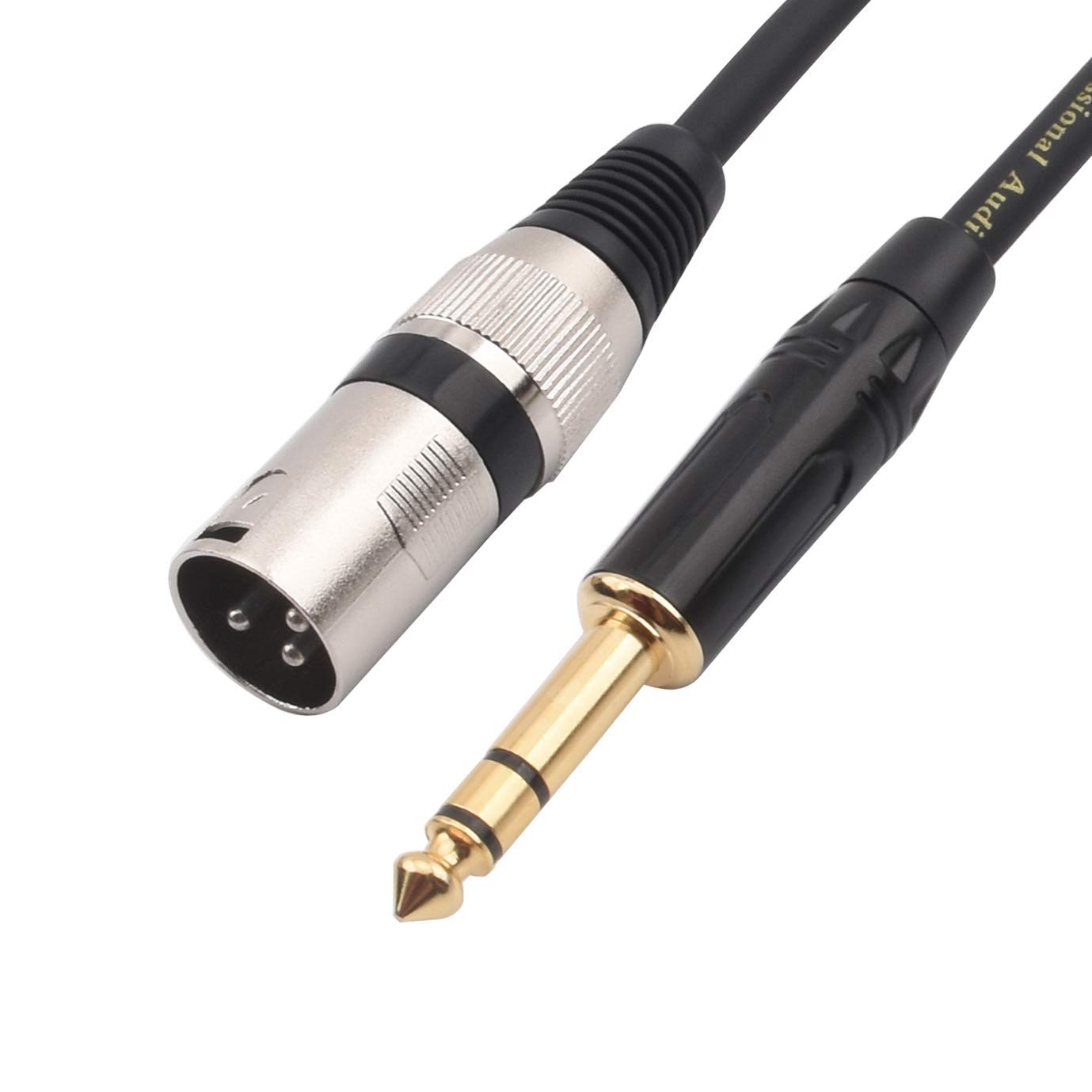About this deal
An unbalanced audio cable comprises two main parts, a ground wire, and a signal. The former acts as the one who delivers audio frequencies, while the latter acts as a reference point and also serves as a shield from outside interferences. And while it does an excellent job of preventing slight hums from street lights and transformers, they also act as an antenna that, ironically, produces noise. Cables are important in our daily lives as they connect different devices and transfer data, signals, or power. A quality cable has several essential features that determine its performance and reliability. Durability Overall, when choosing between these connectors, there are several factors to consider, including sound quality, durability, versatility, and cost. XLR connectors are more rugged and long-lasting. But they are also more expensive and less versatile. The cable length would entirely depend on the working area you have available, so before buying a brand new cable, it’s best first to determine the dimensions of your studio.
Unlike the TRS, the TS (tip-sleeve) unbalanced cable can relay stereo signals in long cables without interference. This allows you to give your fans a great show because you can move freely without worrying about noise distortion in your sound. Types of TRS Connectors Both connectors are used in audio equipment to connect different devices. They look different and have different features, so let’s learn more about them. What is XLR?An XLR connection consists of audio signal connections and a ground connection, making it a balanced connection. It provides resistance against noise from RFI or radio-frequency interference and EMI or electromagnetic interference. This makes XLR connections ideal for use in environments with high levels of electromagnetic interference, such as live concerts or studios.
XLR connectors are mainly for professional audio equipment like microphones, mixers, and speakers and are unsuitable for portable or consumer-grade audio gear.
The bottom line is – XLR is fantastic for studio recording, and also works well for live performances. If superb sound quality is what you are after, XLR is your best bet. As with TSR cable, XLR cable houses three wires that carry ground (X), left or hot (L) signal, and right or cold (R) signal. XLR connectors may be male (characterized by three pins in the connector) or female (with three pinholes). The male connector transmits the audio signals, while the female connector receives them. Pros and Cons of XLR And this occurs even when the cable is moved or bumped around. This makes them ideal for professional audio equipment frequently moved and subjected to heavy use.
To help you decide if a TRS audio cable is right for you, let’s look into its strengths and weaknesses: Pros When it comes to versatility, TRS connectors are more versatile than XLR connectors. This is because TRS connectors are smaller and lighter than XLR connectors.
What are TRS cables?
XLR connectors have two wires that carry the audio signal and a third wire that helps reduce noise. This makes them great for long cable runs. Most professional music creators and producers prefer XLR over TRS, but there are cases when the latter is a more sensible choice.
For ordinary people like you and me, spotting differences between balanced and unbalanced cables might be confusing without using tons of technical jargon, but here is an overview of their differences. The obvious pro to consider when using an XLR vs TRS is sound quality. With an XLR connector, there’s no chance of interference between the left and right channels, so all you’re left with is pure audio quality! Whether you are recording or creating music, you want a clear and crisp sound quality. While many factors can influence sound quality, your choice of audio cable has a drastic impact on your audio project quality.You can use TRS cables with professional audio equipment, but they may not be the best choice for all applications. They are for consumer audio equipment, and their design may not be compatible with some professional audio equipment. Which Type of Cable is Better: XLR or TRS? A TRS cable is an audio cable used to attach audio devices to other devices such as sound cards or amplifiers. The name stands for “tip-ring-sleeve,” which refers to the distinct parts of the cable: the tip, the ring, and the innermost sleeve.
 Great Deal
Great Deal 